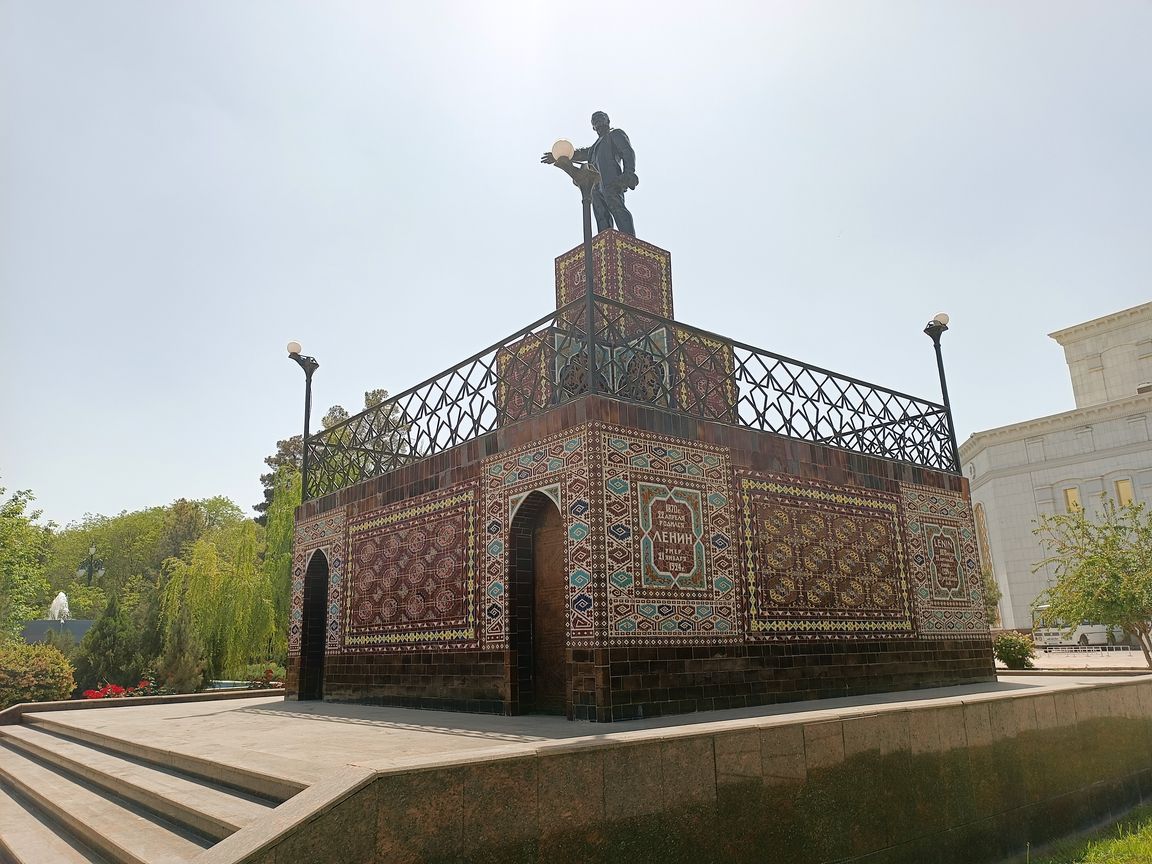The monument to Vladimir Lenin in Ashgabat is one of the most famous sights of the Turkmen capital. It is not only one of the few surviving monuments to the leader of the world proletariat in the world, it is part of the cultural heritage of Ashgabat and is protected by the state.
The main unusual feature of this monument is its appearance - a pedestal in the form of a cube is decorated with majolica tiles, the pattern of which repeats the gels of Turkmen carpets of all the main five tribes of the Turkmen people. The people used to call this monument a “mausoleum”, in a small building under the monument in the days of the USSR there was a museum dedicated to Lenin and the formation of Soviet power in Turkmenistan.
The monument to Lenin in Ashgabat was opened on November 7, 1927, in honor of the 10th anniversary of the October Revolution. The decision to build it was announced in 1924 by the first chairman of the CEC of the TSSR, Nedirbay Aytakov, immediately after Lenin's death.
The area where the construction of the monument began was formerly called the Gymnasium. Later, a square with fountains was laid out around the monument, called “Lenin”, traditionally held ceremonies for admission to the pioneers.

The creators of this unusual monument are sculptor E. Tripolskaya, architect A. Karelin and ceramist N. Nazarov. Tripolskaya only slightly changed the already finished figure of Lenin by V. Kozlov. To cast the monument, bronze cannons from the former royal estate in the city of Bayram-Ali were melted down. The sculpture was cast by hand in a small workshop, A. Dvoinikov, a former foundry worker on the railway, took part in the work.
The idea to cover the pedestal with majolica with the image of carpet ornaments belonged to Andrey Karelin. He was the son of a famous photographer, he also took photographs, drew, graduated from the St. Petersburg Academy of Arts, wrote articles on the topics of art, pedagogy, and the organization of museum work.
Karelin moved to Ashgabat, presumably due to kidney disease, which required changing the cold and damp Russian climate to hot and dry. In Ashgabat, Karelin also took part in the commission for the development of state symbols; in 1926, according to his project, the coat of arms of the Turkmen SSR was approved.
Karelin, together with the ceramist Nazarov, was able to revive the production of traditional oriental majolica. It is believed that the works of masters who decorated the walls of buildings in the cities of Iran were taken as the basis. The quality of the tiles decorating the monument is so high that it could even survive the devastating Ashgabat earthquake of 1948.
The monument to Lenin for many years became one of the symbols of Ashgabat, it was depicted on postcards, envelopes, stamps, guidebooks around the capital of Turkmenistan. And to this day, it is one of the most interesting objects of the city, a monument of a bygone era, no longer carrying an ideological component, but demonstrating the unfading beauty of Turkmen ornaments that came from ancient times.
Resource: infoabad.com
Also read:
- What to bring from Turkmenistan as a gift: souvenirs with love
- How “White Sun of the Desert” and other famous films were shot in Turkmenistan
- Natural and historical sights of Turkmenistan that may be of interest to schoolchildren
- The main brand of Turkmenistan is carpet. It is laid in the homes of world stars and filmed in Hollywood films

